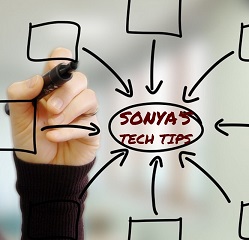Zoom Settings
Here are some settings that you may not be aware of and will be useful when you do use Zoom. All of these items are found in Zoom Settings.
Waiting Room
Make sure your waiting room is turned on so that you can control who is admitted to the Zoom conference. This is a safety concern for those “zoom bombers” that happened earlier during the Pandemic. Of course, if you want others to be able to meet without being admitted by you, turn it off.
Did you know that you can customize the waiting room? Simply click on Customize waiting room and you can add a log and leave a message. I like to leave a message asking students to turn on their video.
Video
If you have many people in the Zoom conference, you may want to check Participants video off. I like to mute participants when they join, but you don’t have to do this.
Chat
Make sure the chat button is on so that conversation can ensue and questions can be asked during the meeting/workshop without disrupting the speaker. You might want to turn the Private chat off, though. Did you know that you can save the chats? Check auto saving chats to on and the chats will be saved under your Zoom folder on your C drive. The file will have the date, the name of your meeting, and the word “chat” in it so you can find it.
Sharing Files
You can share files with your students during a Zoom conference, but make sure that you turn it on. This button in Settings is simply called, File transfer. It might be wise to limit the size of the file if you are allowing students to share files.
Co-host
Turn it on if you want to present with someone else so that they have the same rights as you do.
Meeting Polls
Allows you to poll students during the session. This is a great way to check for understanding during the session (formative assessment) and gives the student a moment to interact. Keep them involved and awake!
Screen Sharing
Make sure you set these to Host Only. You will need this ON if you plan to share your screen with your students by showing them a document, a website, a PPT, or anything else besides the Zoom panel. I do not check the All Participants button because I don’t want participants to be able to share their screen, however, you can give them these rights during a conference.
Annotations
Make sure that you check Only the user who is sharing can annotate, unless you do want your student to annotate on the screen while you are presenting.
Whiteboard
Set it ON so you can use a whiteboard while teaching. You may want to Allow saving of whiteboard content and the other options along with it.
Breakout rooms
Turn on if you are going to organize your students in groups at some time during a conference.
Meeting Reactions
Turn it on so that students can use emojis, if you want them to do so.
Turn off the Allow removed participants to rejoin. If they want to rejoin, they will go back in to the waiting room. For instance, if you intentionally removed someone from your conference, you don’t want them to be able to pop in freely. Turning this off puts you in control of whether you want them to rejoin.
Check ON the Allow Participant to rename themselves. I use this especially when I need to take attendance in a workshop in which I don’t necessarily know all of the students. I ask them to rename their tag if it is not displaying their name.
I like to turn on the Virtual background so that students can hide what is behind them. It may be messy or they just don’t want you to see their space. I’m okay with that. Besides, I like to use fun backgrounds myself.
REMEMBER: any settings you check, will remain set whenever you use Zoom, so if you want something to change for a specific conference, you will have to go in and change it for that particular conference. Remember the judge who came on as a cat?


